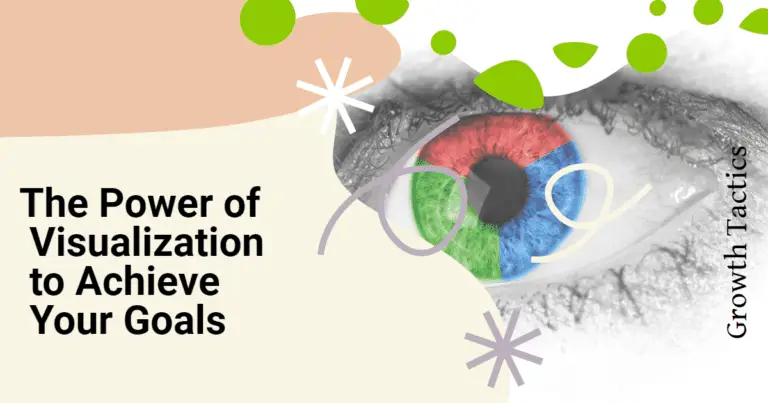Haptic communication is an essential aspect of human interaction that has been used for centuries to provide information and social cues. Touch is a crucial part of nonverbal communication, and it helps us to create and maintain social connections. This blog post will explore the meaning of touch, how haptic communication works, and its application in social communication. We will also discuss the impact of haptic technology on interpersonal communication and collaboration.
Jump To Section
Haptic Communication: Understanding the Meaning of Touch
What is Haptic?
Haptic refers to the sense of touch, which is used as a form of communication between humans and their environments. Haptics is the scientific study of the sense of touch, exploring how people use tactile cues to interact with their environment and other individuals.

Haptic Communication
Haptic communication involves the use of touch to provide information or social cues. It can comprise a range of interpersonal actions, including holding hands, hugging, or even a pat on the back. Haptic communication can also be used in sports, dance, or even workplace communication, conveying messages through touch.
Sense of Touch
The sense of touch is vital in haptic communication. It allows us to perceive physical sensations from stimuli, such as texture, vibration, or temperature. The skin is the primary organ used to communicate through touch. Receptors on the skin respond to pressure, temperature, and vibration, which are then transmitted to the brain for processing.
Tactile
Tactile refers to the sense of touch and the stimulation of the skin to provide information about the surrounding environment. These cues can help to provide context to the information received; in other words, they provide a physical response or manifestation of an idea or thought.
Meanings of Touch in Haptic Communication
Touch is an essential component of nonverbal communication, conveying emotions, attitudes, and social cues. It is a powerful way to communicate with others, often conveying messages that words cannot. Here are some meanings of touch in haptic communication:
Expressing Emotions
Touch can express a wide range of emotions, such as happiness, love, and affection. A gentle touch on the arm can signify empathy and understanding, while a hug can convey warmth and care. Touch can communicate emotions in a compelling way and often sends a more profound message than words alone.
Establishing Connection
Touch is often used to establish and maintain a connection with others. A handshake or a pat on the back is a common haptic signal used to establish social connections. Touch can also convey a sense of trust, openness, and approachability, vital in forming new relationships.
Conveying Information
Touch can be used to convey information indirectly. For example, a firm handshake can imply confidence, while a limp handshake can show shyness or insecurity. Similarly, a touch on someone’s shoulder can communicate support and reassurance. These types of touch help to convey important information within social contexts.

Providing Comfort
Touch has a calming effect and can help reduce stress and alleviate anxiety. For example, a gentle back rub can help soothe tense muscles and provide relaxation. Touch also creates a sense of physical closeness, which can have a comforting effect and help establish a sense of safety and security.
Expressing Intimacy
Touch is often associated with intimacy, expressing closeness and vulnerability between individuals. Holding hands, hugging, or kissing are all haptic signals that signify physical intimacy. Touch can also convey emotional intimacy, allowing individuals to communicate their feelings and emotions through deeper connections.
Communicating Limits
Touch can also communicate limits or boundaries. A step back or a flinch can signal discomfort or a lack of ease with a particular touch. Similarly, a firm but polite refusal of a touch conveys respect for one’s personal space and suggests that further interaction should be approached with consideration.
In haptic communication, touch is a powerful means of conveying emotions, establishing connections, and providing comfort. Understanding the different meanings of touch is crucial in building strong social bonds and communicating effectively with others.
Social-Haptic Communication
Haptic Feedback
Haptic feedback is the technology used to provide touch feedback during interaction with technology or virtual environments. It allows users to receive information via touch and creates a more immersive experience. Haptic feedback is usually used in gaming, simulation, and virtual reality applications.
Haptic Technology
This technology is the use of tactile feedback and touch to interact with technology. The technology provides more immersive user experiences, allowing users to interact with the technology as if it were a physical object. Haptic technology can be used in gaming, simulation, and even in remote collaboration.
Touch Gives Physical Intimacy in Social-Haptic Communication
Touch is an intimate and involving form of nonverbal communication. Through touch, we can convey a range of emotions and signals. The type of touch can provide physical intimacy and emotional connection. Touch can also help us keep good relationships with others. In social communication, touch can be used to connect with others, show affection, or even to comfort them.
Applications of Social-Haptic Communication
Social-haptic communication has numerous practical applications, especially when working with individuals who cannot perceive audio or visual messages. For example, deafblind people use touch communication, where a form of communication interpreted by an interpreter (usually sign language interpreter) is conveyed through touch. Social haptics can also provide information about surfaces and textures, making it easier for people to distinguish between various surfaces.
Impact of COVID-19 on Haptic Communication
The COVID-19 pandemic has severely impacted haptic communication. Shaking hands, hugging, and other forms of touch that were once a common part of interaction are now discouraged or prohibited due to social distancing. As a result, people have had to find new methods of social interaction and maintain connections while practicing social distancing.
Haptic Communication: Multimodal Communication and Collaborative Platforms
What is Multimodality?
Multimodality refers to the use of two or more modes of communication, such as visual or auditory, to convey information. Adding haptic communication to the mix can improve the quality of information conveyed, especially in remote collaboration.
Haptic Communication for Collaborative Platforms
Haptic communication is becoming increasingly important in collaborative platforms, especially in virtual teamwork. Collaborative platforms like XR (extended reality) employ haptic feedback to provide touch sensation for end-users.
Haptic Communication in Architecture
Haptic communication has also been employed in architecture, providing architects with important sensory information about the environment around them. The use of haptic feedback allows architects to feel the texture or shape of a material, which helps shape their design decisions.

Examples of Haptic Signals
Haptic signals play a significant role in haptic communication. These signals can convey different meanings and emotions, allowing individuals to express themselves through touch. Here are some examples of haptic signals and their associated meanings:
Handshake: A Universal Gesture of Greeting and Establishing Connection
A handshake is a common haptic signal used to greet others and establish a connection. It can communicate friendliness, trust, and openness. When someone offers their hand for a handshake, it is an invitation for social interaction and is often used in business or formal settings.
Hug: Expressing Affection and Comfort
A hug is a powerful haptic signal that conveys affection, care, and comfort. It is often used between close friends, family members, or romantic partners. A hug can provide a sense of support, reassurance, and empathy, especially during difficult or emotional moments.
Pat on the Back: Encouragement and Congratulation
A pat on the back is a haptic signal used to express encouragement or congratulations. It is a quick, gentle pat on the back that signifies recognition or approval. This haptic signal is commonly used in sports, group activities, or professional settings to acknowledge a job well done or to motivate someone.
Holding Hands: Intimacy and Connection
Holding hands is a highly intimate haptic signal that signifies a deep connection between individuals. It is commonly associated with romantic relationships but can also be seen among close friends or family members. Holding hands can foster a sense of security, trust, and emotional closeness.
Shoulder Squeeze: Support and Reassurance
A shoulder squeeze is a haptic signal used to provide support and reassurance. It involves placing a hand on someone’s shoulder and applying gentle pressure. This gesture conveys empathy, understanding, and comfort, often used to console or show solidarity during challenging situations.
High-Five: Celebration and Camaraderie
A high-five is a haptic signal that is used to celebrate achievements or show camaraderie. It involves slapping palms together in a quick, upward motion. This gesture signifies excitement, accomplishment, and shared joy. High-fives are often used in sports, teamwork, or to acknowledge a successful outcome.
Back Rub: Relaxation and Soothing
A back rub is a haptic signal used to promote relaxation and provide comfort. It involves using gentle pressure and circular motions on someone’s back. This haptic signal can help alleviate stress, release tension, and create a soothing effect. Back rubs are often given as a gesture of care, especially in close relationships.
Hand on the Arm: Support and Encouragement
Placing a hand on someone’s arm is a haptic signal that conveys support and encouragement. It shows that you are there for them and willing to provide assistance or guidance. This gesture often signals empathy, reassurance, and solidarity, especially in challenging or emotional situations.
Kiss on the Cheek: Affection and Warmth
A kiss on the cheek is a haptic signal used to express affection and warmth. It is a common greeting or farewell gesture in many cultures. This haptic signal is often used between close friends and family members to convey love, care, and intimacy.
Haptic signals are a powerful means of communication, enabling individuals to express emotions, establish connections, and provide support. Understanding the meanings behind these haptic signals can enhance interpersonal communication and promote deeper connections with others.
Conclusion
The meaning of touch extends beyond physical stimulation or sensation. It is an essential aspect of haptic communication, providing context and information about our surrounding environment. Through haptic communication, we can convey a wide range of emotions and signals, allowing us to create and maintain social connections. The application of haptic technology is proliferating in gaming, simulation, and collaborative platforms. Its use helps to provide a more immersive experience for humans, even in remote communication. Social-haptic communication is an essential aspect of human interaction, and it is essential to explore this aspect for healthy and fulfilling social connections.








